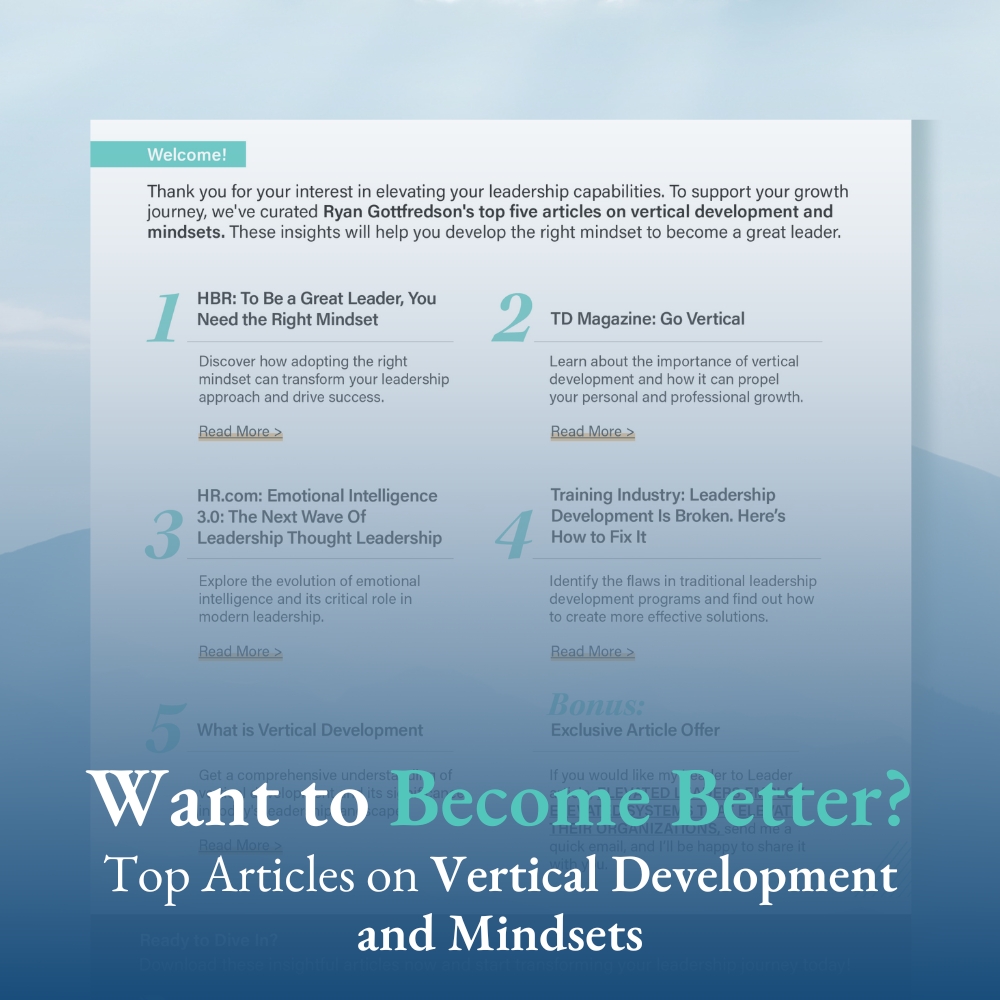In my experience studying vertically developed (Mind 3.0) leaders, I have found that they prioritize establishing a strong leadership foundation to build off of.
In this article, I want to identify four key elements of this foundation.
Based on my experience working with executive teams, I have learned and observed the following:
- Rarely do organizations have all four key elements
- And, it is even more rare for organizations to internalize and prioritize these elements such that they soak into the organization’s culture
- Part of the reason why these elements are rare is because they are never urgent. But, they may be the most important things to focus on for leadership effectiveness and cultural excellence, both of which are essential for long-term effectiveness.
The Four Key Elements of a Strong Leadership Foundation
The four key elements of a strong leadership foundation are:
- A clear, inspirational, and stakeholder-centric purpose statement – Why we do what we do
- A clear, inspirational, and stakeholder-centric mission statement – What we do
- A clear, inspirational, and stakeholder-centric vision statement – Where we are going
- Clear and inspiring values – How we are going to get there
In the following, I will identify why each of these foundational elements are important.
1. A Clear, Inspirational, and Stakeholder-Centric Purpose Statement
Mind 3.0 leaders prioritize getting clarity on why the organization exists, and develops a purpose statement that explains how their organization exists to create values for their primary stakeholders.
Unfortunately, most organizations do not have a strong “why” for why they exist, and as a default, they generally exist to “make money,” or something along those lines, which is generally self-protective as opposed to value creating.
In fact, I find that for Mind 3.0 leaders, whenever they talk about results, they also talk about purpose (the “why” behind the results), and they also talk about the purpose when they aren’t talking about results.
When an organization has a clear, inspirational, and stakeholder-centric purpose statement:
- Meaning gets infused into work
- It becomes the filter by which priorities are established
- It puts leaders and employees in value creation mode (as opposed to self-protection mode)
- It helps leaders to be more long-term focused
- It promotes growth, open, promotion, and outward mindsets
When an organization does not have a clear, inspirational, and stakeholder-centric purpose statement:
- Leaders focus on results in the short-term
- Leaders and employees focus on what is easiest, most comfortable, and best for them
- Leaders and employees operate more in self-protection mode (as opposed to value creation mode)
- There is fighting over whose priorities to prioritize
- Leaders lose sight of the importance of culture
2. A Clear, Inspirational, and Stakeholder-Centric Mission Statement
Unfortunately, more organizations have a mission statement than have a purpose statement. But, ideally, a mission statement—what we do—should stem from a purpose statement—why we do what we do.
Often a mission statement is used to communicate the unique way that they create value for their primary stakeholders.
When an organization has a clear, inspirational, and stakeholder-centric mission statement:
- Leaders and employees operate in alignment
- Leaders and employees become more proactive
- It helps shape the organizations’ identity
- It helps to elevate the brand
When an organization does not have a clear, inspirational, and stakeholder-centric mission statement:
- Leaders and employees become misaligned
- Leaders and employees become more passive and reactive
- The organization feels more like a floundering blob than a thriving, flourishing, and driven entity
3. A Clear, Inspirational, and Stakeholder-Centric Vision Statement
My experience working with executive teams is that most executives struggle to think into the distant future. This is partly because they are generally Mind 2.0 leaders who have been trained to focus on hitting short-term outcomes. But, it is also because a lot of executives are afraid to commit to a future state that they can’t fully control.
But, there is nothing that infuses hope more into an organization than a clear and inspirational vision.
When an organization has a clear, inspirational, and stakeholder-centric vision statement:
- Leaders and employees operate with hope
- Leaders and employees clarity of direction
- Leaders and employees have a greater ability to make decisions and appropriately determine their most important priorities
- Leaders and employees focus on the long term over the short term
- Leaders and employees are more inclined to get out of their comfort zone to attain the desired future state
When an organization does not have a clear, inspirational, and stakeholder-centric vision statement:
- Leaders and employees lack hope
- Leaders and employees lack direction
- Leaders and employees focus on what is urgent as opposed to what is important
- Leaders and employees focus on the short term over the long term
- Leaders and employees are more inclined to make decisions and do the things that help them to stay in their comfort zone
4. Clear and Inspiring Values
My experience is that less than half of all organizations have stated values. And, my experience is that in the organizations that have stated values, the leaders of those organizations (1) do not have a clear or deep understanding of their values, and (2) do not give much attention to their values.
But, values are more critical than ever because…
When an organization has clear and inspirational values:
- Leaders can hold their employees accountable. Here is the thing, in a manufacturing company, accountability is relatively easy. You set clear expectations for units produced, you measure, and you provide feedback. But, in a service industry, accountability is difficult. You can’t set expectations for all behaviors required for good service. But, you can set expectations for certain values that are aligned with good service.
Thus, when an organization does not have clear and inspirational values:
- Leaders are unable to establish a healthy and effective culture of accountability
Altogether
When leaders prioritize and establish a strong foundation via a purpose statement, mission statement, vision statement, and values, they operate as gardener-minded leaders, and are able to cultivate the most optimal environment for their leaders and employees to grow and thrive.
Unfortunately, all too often, even though establishing this foundation is the most important thing a leader can do, most leaders do not. This is because it is never urgent and directly connected to profits and losses. But, it surely influences profits and losses at a foundational level over time.











One Response
What a great article! As an EOS Implementer, I can attest to the profound impact of clarity on Values, Mission, Purpose, and Vision. When I work with Leadership Teams to implement EOS, these are the first things we articulate in a document called The Vision/Traction Organizer (V/TO). With this foundation of leadership,…
– WHO we are as a tribe and HOW we do things (core values),
– WHAT we do and WHY we do it (purpose / mission / Core Focus)
– WHERE we’re going (vision, BHAG, or “10-Year Target”)
… leaders have a basis to help their team stay hopeful, inspired and focused as they engage in the HARD WORK of moving the business into the future. Annual Goals and Quarterly “Rocks” (the most important things we must do in the next 90 days) keep the team focused and united as they innovate to capture opportunities and overcome barriers… to get Traction toward the Vision! “Vision without Traction is just hallucination.”